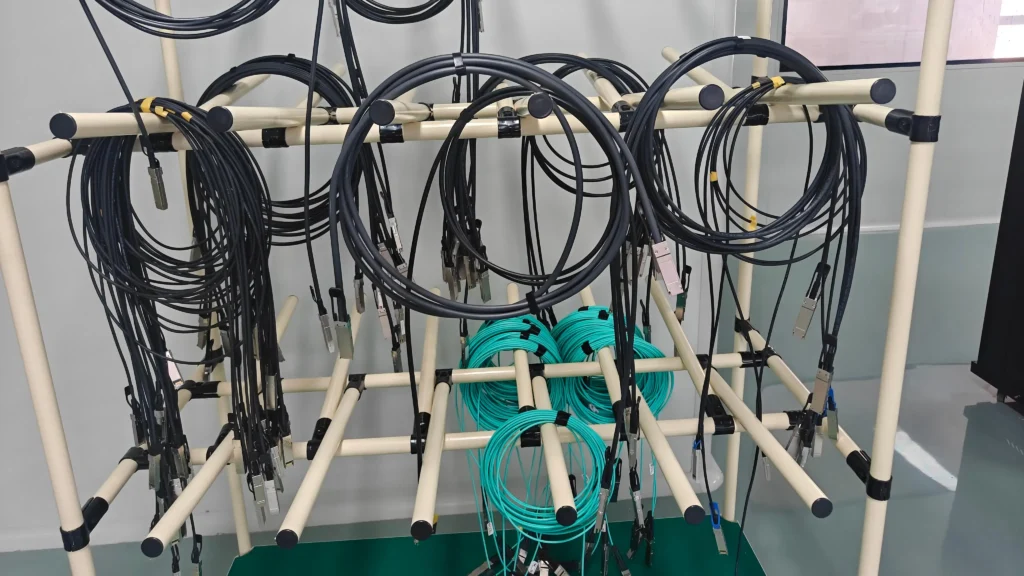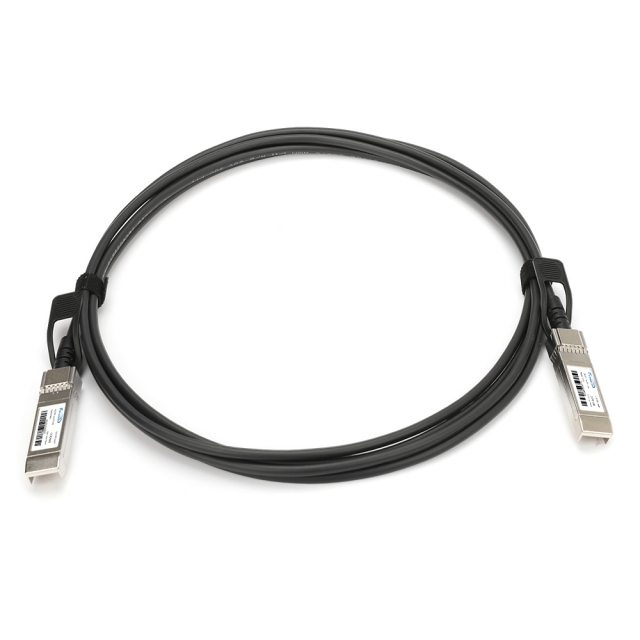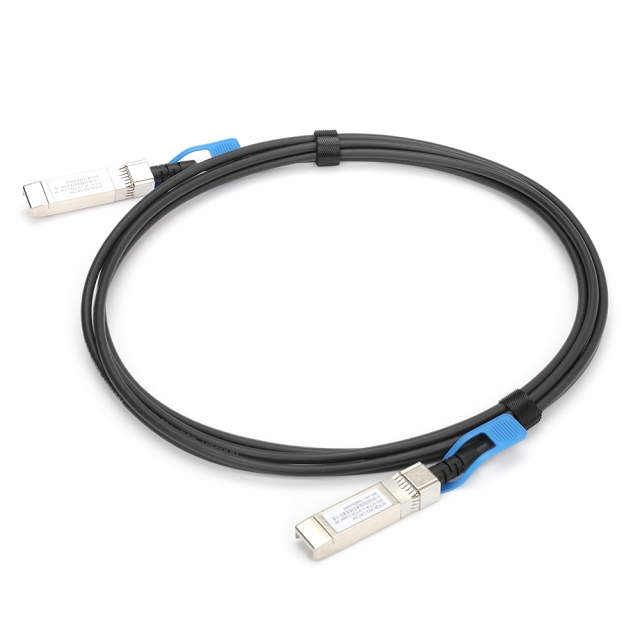How Long Can a 10G DAC Cable Be?
As organizations move toward faster applications, virtualization, and cloud-based workloads, 10 Gigabit Ethernet (10GbE) has become a standard requirement. One of the most popular and cost-effective ways to establish 10GbE connections is with 10G Direct Attach Copper (DAC) cables.
But a common question arises for IT managers, system integrators, and network engineers alike: How long can a 10G DAC cable actually be, and what are the limitations you should consider before deployment?
This article explores DAC cable technology in depth, the typical length restrictions, the difference between passive and active designs, and practical guidance for selecting the right solution for your infrastructure.
What Is a 10G DAC Cable?
A 10G DAC cable is a high-speed twinax copper cable with SFP+ connectors pre-terminated at both ends. Unlike optical fiber cables, DAC cables transmit data using electrical signals over copper conductors. They are commonly used for short-distance connections such as:
Server-to-switch links in data centers
Switch-to-switch interconnections within racks or between adjacent racks
Network storage connections requiring low latency and high bandwidth
Because DAC cables are plug-and-play and require no additional transceivers, they provide a cost-effective alternative to fiber optic cabling for short distances.
Passive vs. Active DAC Cables
The maximum reach of a DAC cable depends on whether it is passive or active:
Passive DAC Cables
Contain no electronics inside the cable.
Rely entirely on the signal strength of the networking device’s transceiver.
Typically limited to lengths of up to 7 meters (about 23 feet).
Best suited for top-of-rack (ToR) or middle-of-row (MoR) architectures where cable runs are short.
Active DAC Cables
Contain built-in signal conditioning or amplification circuitry.
Extend reach beyond passive limitations, supporting 10–15 meters (about 33–49 feet).
Provide more stable transmission over longer distances without introducing errors.
Commonly deployed when racks are spread further apart in large-scale data centers.
Why Length Limitations Matter
The maximum length of a DAC cable is not arbitrary. It’s determined by physical and electrical characteristics:
Signal Attenuation – Copper cables naturally lose signal strength as distance increases. Longer cables risk weaker signals and reduced throughput.
Electromagnetic Interference (EMI) – Copper is more prone to interference compared to fiber. Longer cables can pick up more noise, leading to errors.
Power Consumption – Active DACs require power to regenerate signals, which can add slightly to energy usage compared to passive options.
Latency Considerations – While DAC cables are known for near-zero latency, excessive length may still impact ultra-sensitive workloads.
For these reasons, most data center managers prefer to keep DAC runs as short as possible.
When to Use DAC vs. Fiber
If your deployment requires connections longer than 15 meters, DAC cables are no longer the most efficient choice. In such cases, optical transceivers with fiber optic cables become the better solution. Fiber optics support much greater distances (ranging from a few hundred meters up to tens of kilometers) while maintaining low signal loss and high reliability.
In short:
0–7m → Use Passive DAC
7–15m → Use Active DAC
15m+ → Use Fiber Optics
Practical Deployment Considerations
When deciding on the right cable length and type, keep these factors in mind:
Rack Layout and Distance – Measure accurately between servers, switches, and storage devices before ordering. Overestimating cable length leads to clutter, while underestimating can halt deployment.
Airflow and Cable Management – Shorter DACs reduce excess cabling, improving airflow in racks and lowering cooling costs.
Power Efficiency – Passive DACs consume less power than active versions, which is important in high-density environments.
Future Scalability – If you anticipate network expansion, consider whether fiber optics may offer greater flexibility down the line.
Budget Constraints – DACs remain far less expensive than fiber optic setups for short connections, offering significant cost savings.
Advantages of Using DAC Cables
Beyond cost and simplicity, DAC cables provide several key advantages:
Low Latency – Ideal for latency-sensitive applications such as high-frequency trading, virtualization, or HPC (high-performance computing).
High Reliability – Pre-terminated SFP+ connectors reduce compatibility issues and human error during installation.
Energy Efficiency – Particularly with passive DACs, there is virtually no additional power consumption.
Ease of Use – Simply plug in both ends, with no need for optical transceivers or separate fiber patch cords.
The Role of Brand Quality
Not all DAC cables are created equal. High-quality manufacturing ensures better shielding, consistent impedance, and long-term reliability. For businesses seeking dependable connectivity, brands like Fibrecross deliver DAC cables designed to meet strict performance standards while remaining cost-efficient. Choosing a reputable brand reduces the risk of signal degradation, connector failure, or downtime due to inferior materials.

Conclusion
So, how long can a 10G DAC cable be? The answer depends on whether you choose passive or active options. Passive DACs typically reach up to 7 meters, while active DACs extend up to 15 meters. Beyond that, fiber optics become the recommended solution for maintaining speed, signal quality, and scalability.
In today’s data-driven world, selecting the right cabling infrastructure is essential for performance, energy efficiency, and long-term growth. By understanding the practical limits of DAC cables, IT teams can make informed choices that balance cost, reliability, and future-proofing.
Whether you’re designing a small enterprise network or building a hyperscale data center, DAC cables remain one of the most reliable and affordable ways to deploy 10G Ethernet for short-to-medium distances.






